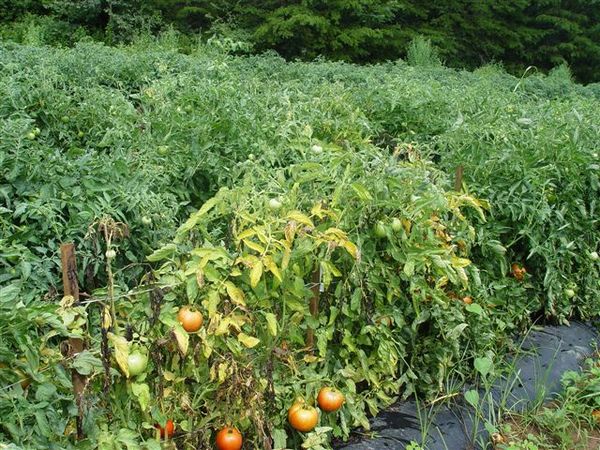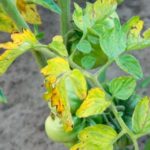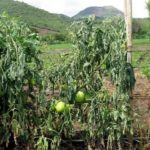Any tomato grower must know all the diseases that can affect the crop at any stage of growth. This requirement is mandatory for anyone who seeks to get a bountiful harvest, featuring excellent taste. One of the most common diseases of tomato bushes is Fusarium wilt.
To successfully deal with it, it is recommended to be able to recognize its main features and take timely measures.
Table of contents
How to recognize tomato fusarium
Gardeners are often confused with signs of fusarial wilting of seedlings and other diseases. The lack of useful components in the soil is the reason why all the toxic compounds and fertilizers on hand go into the business, often not yielding positive results.
Required carefully study the signs this disease, which can occur not only in seedlings, but also on adult tomato bushes:
- the initial stage of the disease can be recognized on the bottom foliage. After some time, the disease spreads throughout the plant. The leaves become pale or yellow, their veins brighten;
- petioles are deformed, the leaves begin curl up, then - fall off;
- top shoots of the bush fade. After a while the bush dries out completely;
- the final stage is the death of the root system;
- during the period of wet weather, a bright coating appears on the roots, in sunny weather the symptoms appear even more.
- Fusarium spreads on tomato starting from the lower leaves
- Gradually fade all leaves and top shoots.
The causes of the disease
Fusarium - a disease common and quite dangerous. It manifests itself in all climatic zones.
With the defeat of the fungus affects the tissues and blood vessels of the plant, it begins to fade, the root system and the fruits rot. The main problem lies in the fact that the pathogen can be for a long time in the soil or on the remains of plants, and then defeat new crops.
The provocateur of the disease can become previously planted or seeded material. Experienced gardeners have noticed that the lack of lighting and dense planting are often the causes of the disease.
Importance is given and ecology area. If a large industrial enterprise is located in the immediate vicinity of the plot with tomato plants, then it can have a negative impact on the future harvest.
The cause of the disease are passing groundwater, excess nitrogen and chlorine, or their deficiency, disturbed irrigation,erroneous actions in the organization of crop rotation.
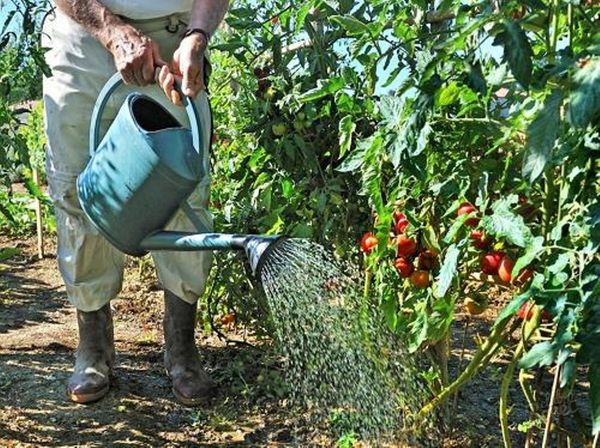
Methods for the treatment of fusarium wilt
Dangerous disease, spores that provoke it, are resistant to different chemical compounds to combat it. A large number of fungi is inside the plant, not on its surface. To remove them from the vessels of the tomato bush is difficult and sometimes impossible.
If seedlings are severely affected, they are best. remove together with the root and burn. In such beds, it is recommended to plant tomato varieties that are notable for good resistance to such a disease. But in this case there is no absolute certainty that the future harvest is fully protected from Fusarium.
To prevent further development of the disease, it is recommended to take appropriate measures of treatment:
- carefully clean the beds before the winter season;
- dig deep decontaminate her before sowing;
- process the seed and warm it;
- shoot the bushes with shears;
- spud the planted seedlings.
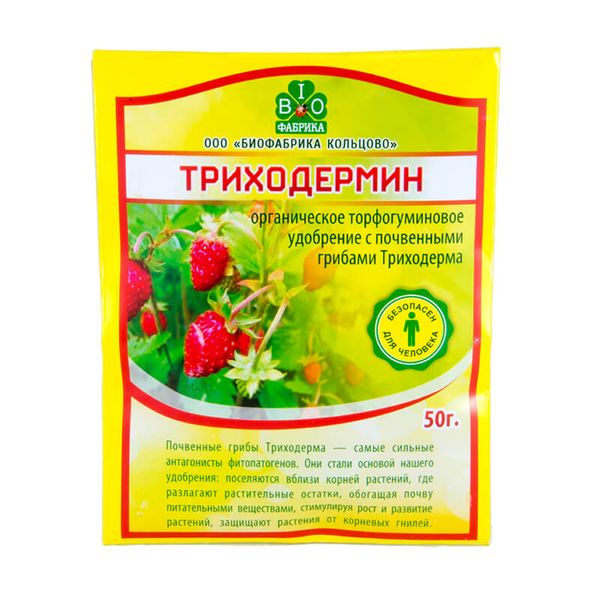
If the disease is detected at its early stage, then you can apply chemical compositions from the fungus. Under each plant, up to half a liter of the prepared Trichodermin solution is applied. Effective and Falcon, which is processed foliage plants.
Detection of brown spots on tomatoes
Brown spotting develops, moves to the upper branches of the plant, continuing to infect foliage and without touching the stem with the fruits. True, the latter do not receive fully useful components to support the process of photosynthesis.
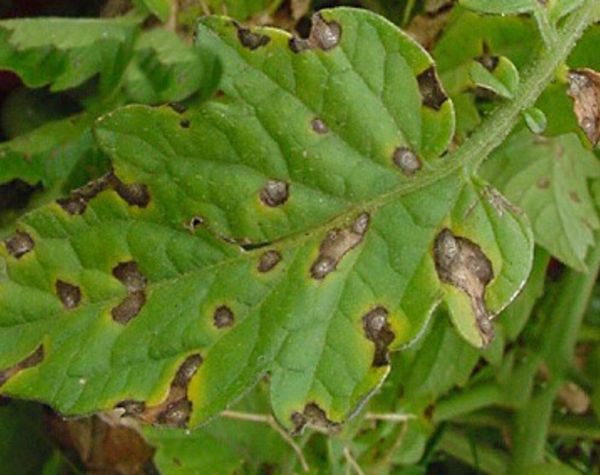
Causes of occurrence and methods of struggle
The main causes of the disease are:
- high humidity air;
- high temperature;
- infectious foci in the form of remnants of last year's plants, contaminated soil, wooden elements of the greenhouse, garbage heaps.
To deal with such a nuisance in two ways:
- folk remedies;
- chemical preparations.
In the first case, the plants are sprayed. iodine chloride. Soil composition is shed by the same solution at a depth of ten centimeters. Preparing a solution is simple - 30 g of potassium chloride and 40 drops of iodine are added to a bucket of water.
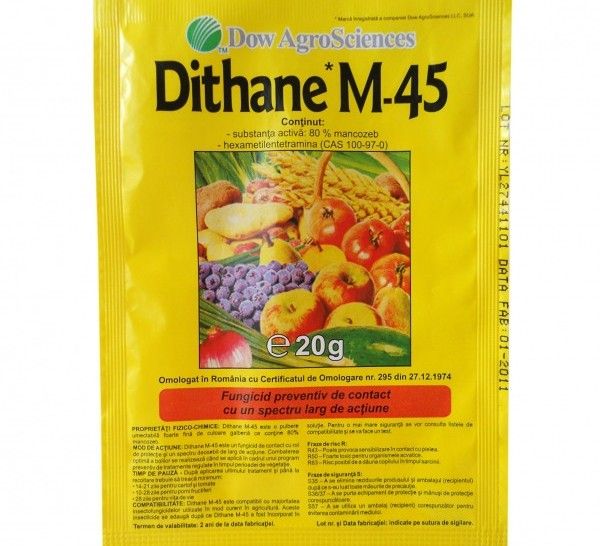
As chemical agents, copper oxychloride, Bravo, Ditan are recommended. Solutions are prepared strictly in accordance with the recommendations of the manufacturer. It is necessary to process plants twice, with an interval of two weeks.
Prevention of brown spot
It is recommended to take the following measures:
- finishing harvesting remove the plants along with the roots and burn everything;
- follow crop rotation;
- to air greenhouses so that the moisture level does not exceed seventy percent;
- remove and burn affected foliage;
- observe watering mode;
- track temperature.
Such diseases can cause significant damage to your garden. But if you constantly carry out preventive measures, the chances of preserving plants will increase.
